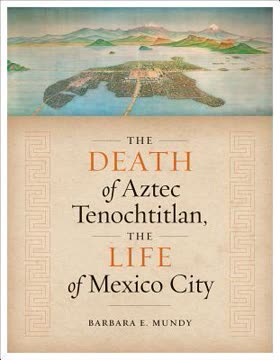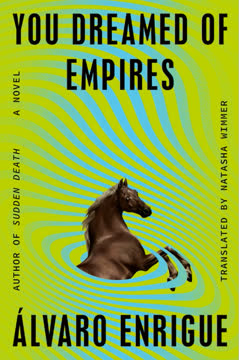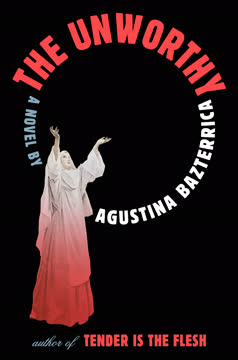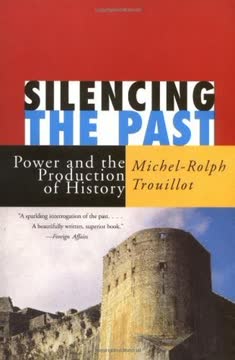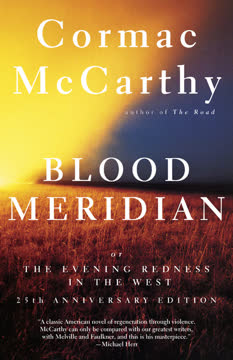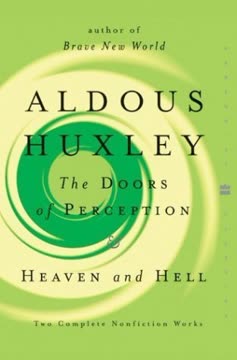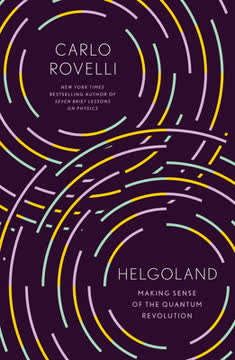Key Takeaways
1. Tenochtitlan's Enduring Life: Beyond the Myth of Death
This book will argue that while the Conquest changed an indigenous New World capital, and it was remade into the hub of the global empire of the Habsburg kings in the sixteenth century, it did not destroy indigenous Tenochtitlan, either as an ideal, as a built environment, or as an indigenous population center.
Challenging narratives. The conventional historical narrative often portrays the Aztec capital of Tenochtitlan as having "died" with the Spanish Conquest in 1521, giving way to the birth of Mexico City. This perspective, reinforced by conquistador accounts and later colonial commemorations, equates the city's demise with its physical destruction and the overthrow of its political leadership. However, this book argues that such a view is a myth, overlooking the profound continuities of indigenous life, culture, and urban structure that persisted long after the Conquest.
Beyond political decapitation. While the Mexica emperor Cuauhtemoc's surrender and subsequent execution marked a political decapitation, the city itself, as a complex social and spatial entity, did not simply vanish. Indigenous scribes, even decades after the Conquest, grappled with this idea, as seen in the ambiguous dating of Moteuczoma II's reign in the Codex Mendoza, which hesitated to mark the city's end with its ruler's death. The ongoing flow of history in documents like the Codex Aubin further demonstrates that the city's narrative extended beyond its ruling elite, suggesting a deeper, more resilient existence.
A phoenix reborn, but not from ashes. The metaphor of Mexico City as a phoenix, rising from Tenochtitlan's ashes, implies a complete destruction followed by a miraculous rebirth. This book contends that indigenous Tenochtitlan lived on, its essence woven into the fabric of the new colonial city. The continuity was evident in its enduring population, its established transport networks, its hydraulic infrastructure, and its building technologies, all of which continued to shape the urban landscape and the daily lives of its inhabitants.
2. The City as a Living Space: A Triad of Perception, Conception, and Practice
If we turn to an early page of the Codex Aubin, which offers a history of the city seen from the bottom up, unlike its top-down counterpart, the Codex Mendoza, and look at the page that marks the beginning of a new fifty-two-year period in the year 2 Reed, the glyph in the upper right, we see one way the Mexica thought of cities.
Beyond static representations. To truly understand Tenochtitlan and Mexico City, we must move beyond viewing them merely as static images on a map or a collection of buildings. Henri Lefebvre's conceptual triad offers a powerful framework:
- Representations of space (the conceived): Ideologies, maps, urban plans, cosmic models.
- Lived space (representational spaces): The built environment (streets, buildings, plazas) infused with meaning.
- Spatial practice (the perceived): The daily, quotidian actions and movements of urban dwellers.
Interconnected spheres. These three spheres are not isolated but constantly intersect and influence each other. For instance, the Mexica's cosmic vision (representation of space) shaped the layout of their temples (lived space), and the daily rituals performed by priests and citizens (spatial practice) imbued these spaces with sacred meaning. The city is not just what is built, but how it is imagined and how it is used.
Traces in plain sight. Even when historical records are scarce, the traces of these interconnected spheres can be found. A street sign like "Puente de Alvarado" in modern Mexico City, for example, is a representation of space that evokes a specific historical event (Alvarado's leap) and is reinforced by collective memory and past commemorative practices. By examining these layers, we can uncover the enduring presence of indigenous Tenochtitlan within the colonial city, revealing continuities often obscured by dominant historical narratives.
3. Water as the Sacred Heart: Mexica Cosmology and Hydraulic Mastery
The Mexica identified the sacred quality of the natural world as teotl, a word that expresses, as Richard Townsend put it, “the notion of a sacred quality, but with the idea that it could be physically manifested in some specific presence—a rainstorm, a lake, or a majestic mountain.”
Teotl and the altepetl. For the Mexica, the natural world was imbued with teotl, a sacred, animating force. This belief was central to their understanding of the altepetl, their city-state, literally meaning "water hill." The ideal altepetl was a place of abundant freshwater, often depicted with crossing streams emerging from a sacred hill, symbolizing life and prosperity. This cosmic model was not just an abstract idea but a blueprint for their urban development.
Mastering the watery environment. Tenochtitlan, built on a salty lake, was a testament to Mexica ingenuity in hydraulic engineering. Over generations, they transformed a swampy landscape into a verdant island through:
- Chinampas: Raised agricultural beds that provided food and reclaimed land.
- Dikes: Massive barriers like the Nezahualcoyotl dike (ca. 1449–1450) and the Ahuitzotl dike (ca. 1499–1500) that separated fresh from salty water, creating a freshwater laguna.
- Aqueducts: Systems like the Chapultepec aqueduct, bringing potable water from distant springs.
Chalchiuhtlicue: The unpredictable force. While water was life-giving, it was also a dangerous, unpredictable force, embodied by the deity Chalchiuhtlicue. She was associated with floods and whirlpools, capable of both nurturing and destroying. The Mexica sought to tame her through ritual and engineering, as seen in the Acuecuexatl stone and the Teocalli of Sacred Warfare, which depicted her subjugation, symbolizing the city's triumph over its watery environment.
4. Rulers as Embodied Space: Performance, Monuments, and Divine Connection
For the Mexica huei tlatoani, it was through being seen, both by members of the elite and then by a larger public, that the ruler and his associated authority was made tangible within specific urban spaces.
Visibility and authority. Mexica huei tlatoque (supreme leaders) were not just political figures; they were seen as delegates of deities, embodying the altepetl itself. Their authority was made tangible through public visibility and performance in specific urban spaces. This "leaky agency" left a lasting residue on the city's lived spaces.
Costume and spatial representation. Rulers used elaborate costumes to represent both the vastness of their empire and the layered cosmos:
- Featherworks: Garments made from exotic feathers (e.g., quetzal) symbolized the spatial expanse of the tributary empire, bringing distant peripheries to the urban core. The famed headdress of Moteuczoma II is a prime example.
- Deity costumes: By dressing as deities like Huitzilopochtli or Xipe Totec, rulers brought otherworldly realms to the terrestrial plane, acting as conduits between the sacred and the quotidian.
Monuments and axes. Rulers embedded their presence in the city's built environment through monumental sculpture and by moving along key urban axes:
- Chapultepec portraits: Moteuczoma I and II had their portraits carved into Chapultepec hill, linking their rule to the city's vital freshwater source.
- Acuecuexatl stone: Ahuitzotl commissioned this stone to commemorate his control over water, depicting himself as Chalchiuhtlicue's teixiptla (deity delegate).
- Processional routes: The Tlacopan causeway, carrying Chapultepec's water, was a principal ceremonial route for rulers' inaugurations and triumphant returns, imbuing it with their presence.
5. Indigenous Resilience: Rebuilding Mexico City from Within
But spaces have a way of refusing to give up their pasts.
Reclaiming the city. Despite the devastation of the Conquest, Tenochtitlan's indigenous residents returned and actively participated in rebuilding the city. While Spanish conquistadores focused on establishing a new traza (grid plan) around the Plaza Mayor, the vast majority of the island remained indigenous territory, organized into four parcialidades (Moyotlan, Teopan, Atzacoalco, Cuepopan) and the separate altepetl of Tlatelolco.
Indigenous governance and infrastructure. Indigenous leaders, known as gobernadores, played a crucial role in the city's recovery:
- Juan Velázquez Tlacotzin: Appointed by Cortés, he was instrumental in re-establishing the Tianguis of Mexico, the city's vital marketplace, at its pre-Hispanic site. His title, cihuacoatl, linked him to the maintenance of urban infrastructure.
- Huanitzin and Tehuetzquititzin: Descendants of Mexica huei tlatoque, they continued to lead the indigenous cabildo, maintaining traditional forms of governance and asserting indigenous authority.
- Labor and knowledge: Indigenous laborers, guided by traditional knowledge, rebuilt causeways, maintained canals, and constructed new buildings, ensuring the city's functionality.
Enduring social and spatial structures. The post-Conquest city retained many pre-Hispanic social and spatial categories:
- Parcialidades: These four divisions, often renamed with Catholic saints (e.g., San Juan Moyotlan), continued to function as distinct sociopolitical entities.
- Tlaxilacalli: Smaller neighborhoods within the parcialidades remained the basic units of collective identification, often retaining their Nahuatl place-names.
- Markets: The Tianguis of Mexico, a bustling hub of indigenous commerce, quickly resumed its central role in provisioning the city.
6. The Market's Pulse: Sustaining Indigenous Urban Life and Economy
The marketplace of Mexico is wide and long, and surrounded on all sides by an arcade; so large is it, indeed, that it will hold seventy thousand or even one hundred thousand people who go about buying and selling, for it is, so to speak, the capital of the whole country, to which people come, not only from the vicinity, but from farther off.
Economic lifeline. The tianguis (market) was the economic heart of both pre-Hispanic Tenochtitlan and colonial Mexico City. After the Conquest, the Tianguis of Mexico was re-established in the city's southwest, becoming a bustling hub that sustained the indigenous population and provisioned the entire city. Its scale and variety of goods impressed Spanish observers.
A vibrant sensory experience. The tianguis offered a rich sensory experience, connecting residents to the city's past:
- Goods: Dominated by traditional Mesoamerican foodstuffs (maize, chilies, beans, fish, meat), but also featuring luxury items, textiles (including new Spanish-influenced ones like silk), and crafts.
- Smellscape: The strong odors of chilies, fish, and tropical fruits would have evoked a familiar pre-Hispanic atmosphere.
- Soundscape: The calls of Nahuatl-speaking hawkers and the sounds of indigenous instruments like the mecahuehuetl (corded upright drum) filled the air.
Indigenous control and contestation. The tianguis was primarily an indigenous space, organized and overseen by the native cabildo and its judges. This control, however, was often contested by the Spanish cabildo, which sought to assert its jurisdiction over the city's land and commerce. Lawsuits reveal these struggles, with indigenous leaders arguing for communal ownership and the historical significance of the market's layout.
7. Contested Spaces: Forging a New Indo-Christian Identity
In creating a new narrative about Mexico City that shows its historic connections to pre-Hispanic Tenochtitlan and the importance of indigenous Mexico-Tenochtitlan to its sixteenth-century identity, I have been compelled by the challenge posed by Michel de Certeau, who asks those of us thinking about the urban form to move from flying, with its distance, to the point of view of the walker, moving along created and creative itineraries within the city.
A new Rome in the New World. Franciscans, particularly Pedro de Gante, envisioned Mexico-Tenochtitlan as a "new Rome," a Christian utopia built on the ruins of a pagan empire. This project involved both internal (re-educating indigenous minds) and external (reshaping urban spaces) transformations. They sought to erase memories of idolatry and inscribe Christian doctrine onto the city's landscape.
Architectural and symbolic transformations. The Franciscans strategically reused and transformed indigenous spaces:
- San José de los Naturales: This enormous, seven-naved chapel within the San Francisco monastery became the primary parish for the city's indigenous population, a new religious center.
- Parcialidad chapels: The four parcialidades were given patron saints from Rome's major basilicas (San Juan, Santa María, San Pablo, San Pedro), symbolically recasting Mexico-Tenochtitlan as a Christian city.
- Reusing materials: Temples were dismantled, their stones often repurposed for new churches, blurring the lines between destruction and continuity.
Place-names as historical markers. Place-names, both Nahuatl and Spanish, became crucial markers of identity and contested claims:
- "Mexico" vs. "Tenochtitlan": The shifting use of these terms by Spanish and indigenous authorities reflected evolving political jurisdictions and territorial ambitions.
- Tlaxilacalli names: These neighborhood names, often descriptive of topography or historical events, persisted and were used for self-identification, even as they were sometimes linked to Christian saints.
- Graphic script: The continued use of iconic Nahuatl script in documents meant that place-names retained their etymological and historical depth, resisting simple linguistic effacement.
8. Ritual and Memory: Shaping the City's Collective Past and Present
Through the appropriate commemorabilia I overcome the effects of anonymity and spatio-temporal distance and pay homage to people and events I have never known and will never know face-to-face.
Public rituals as collective memory. Public ceremonies and processions were vital in forging collective memory and identity in Mexico City. These events, whether Spanish- or indigenous-sponsored, made the city "visible to itself," reinforcing social order and historical narratives. Maurice Halbwachs's concept of collective memory highlights how shared experiences of rituals create a common past.
Indigenous festivals and their significance:
- Holy Week processions: Organized by indigenous cofradías (religious sodalities), these processions displayed a hybrid culture, featuring European iconography but indigenous materials (featherworks, flower images) and organization by parcialidades.
- Mitotes (ceremonial dances): These pre-Hispanic dances, often performed with elaborate feathered costumes and specific songs, were adapted for Christian rituals. They served to:
- Reaffirm indigenous rulership and military prowess.
- Integrate new generations into communal identity through kinesthetic learning.
- Become a flashpoint for tensions between commoners and elites over communal resources.
Axes of meaning. Processional routes actively shaped the city's lived spaces, creating and reinforcing urban axes and centers:
- San Hipólito procession: Commemorated the Spanish victory, tracing the route of the Noche Triste retreat along the Tacuba causeway.
- Easter Sunday procession: Began from both San Francisco (indigenous) and Veracruz (Spanish), converging to underscore the city's dual "republics."
- North-south axis: Linked San Francisco to Santa María Cuepopan and Santiago Tlatelolco, marking a crucial indigenous-Franciscan corridor.
9. Water's Enduring Challenge: Indigenous Knowledge vs. Colonial Neglect
But one of the most important roles of pre-Hispanic rulers was the manipulation of water, which was essential for the maintenance of the altepetl within the singular watery environment of the Valley of Mexico, and it is to water that we return in the next chapter.
Colonial mismanagement and environmental degradation. After the Conquest, Spanish neglect and a poor understanding of the complex hydraulic system led to severe problems:
- Dike breaches: The Nezahualcoyotl dike was breached during the war, and subsequent neglect of the entire dike system led to increased salinity in the laguna and vulnerability to floods.
- Deforestation and erosion: Spanish demand for timber and conversion of land to pasture caused widespread deforestation and erosion, reducing the valley's absorptive capacity and exacerbating flooding.
- Pollution: Canals, once used for irrigation, became polluted with waste from tanneries and slaughterhouses, rendering them unfit for use.
Indigenous expertise and persistent efforts. Despite these challenges, indigenous knowledge remained crucial for water management:
- Dike rebuilding: In 1555, Viceroy Velasco relied on indigenous leaders and their "pinturas antiguas" (native manuscripts) to advise on rebuilding the San Lázaro dike, mobilizing 6,000 indigenous laborers.
- Valeriano's aqueduct: Don Antonio de Valeriano, gobernador of Mexico-Tenochtitlan, successfully championed the construction of a second Chapultepec aqueduct (1575-1582) to supply freshwater to indigenous neighborhoods, overcoming Spanish cabildo resistance and the devastating cocoliztli epidemic.
- Tlatelolco cistern: The caja de agua in Santiago Tlatelolco, adorned with murals of a watery paradise, exemplified indigenous engineering and symbolic integration of water.
The enduring altepetl. Valeriano's aqueduct project, culminating in a fountain in the Tianguis of Mexico, restored the image of the altepetl – the sacred water hill – in the heart of the indigenous city. This act, alongside the continued indigenous control over the tianguis lands, demonstrated the resilience of indigenous governance and their deep connection to the city's watery environment, a connection that persisted despite centuries of colonial pressure and the eventual "de-watering" of the valley.
Last updated:
Review Summary
The Death of Aztec Tenochtitlan, the Life of Mexico City receives high praise for its comprehensive exploration of Mexico City's history, from Aztec times to the present. Readers appreciate Mundy's detailed analysis, extensive research, and engaging writing style. The book's beautiful illustrations and Mundy's interdisciplinary approach are highlighted. Some find the academic tone and repetition challenging, but overall, reviewers commend the book's powerful message about indigenous cultural continuity and its thorough examination of the city's transformation over time.
Similar Books
Download PDF
Download EPUB
.epub digital book format is ideal for reading ebooks on phones, tablets, and e-readers.
